The Murder Castle - Inside H. H. Holmes’ Hotel
The H. H. Holmes home - 100 rooms are said to be full of trapdoors, gas chambers, staircases that lead nowhere, and a stove that is the size of a person.
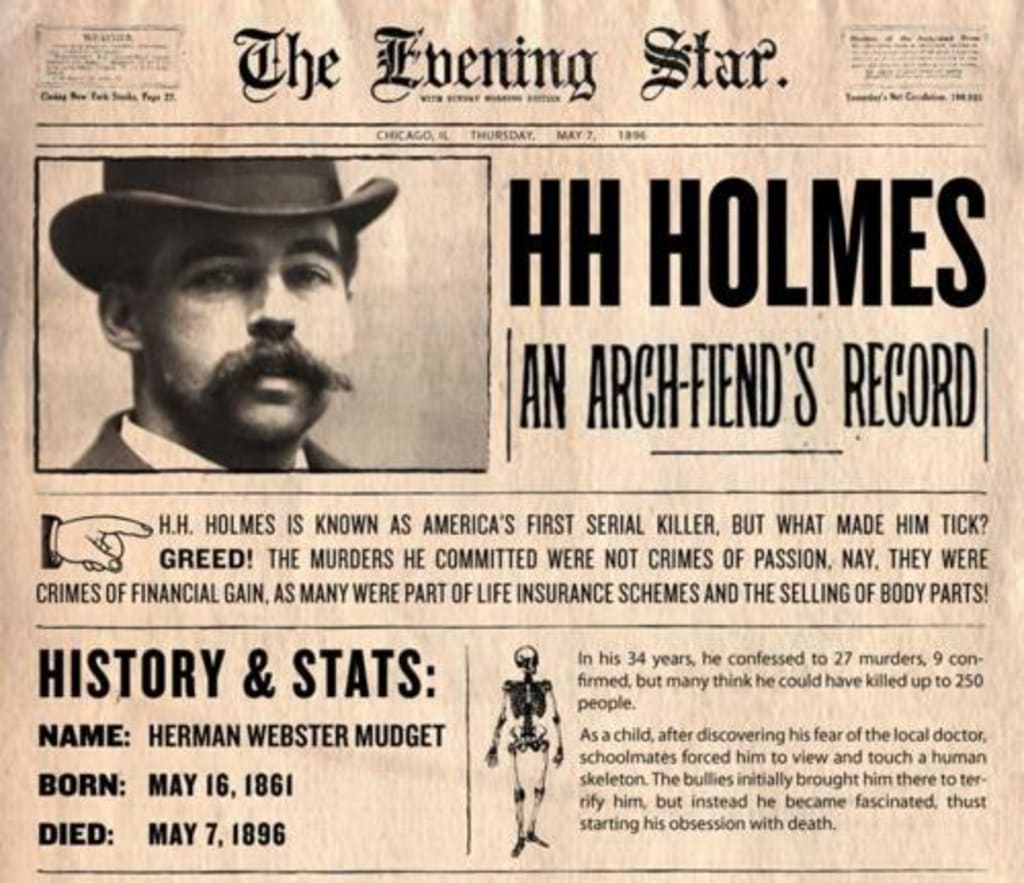
You may run up a set of stairs at the World's Fair Hotel, also known as the H. H. Holmes hotel, only to discover that they led nowhere.
Opening doors would reveal nothing but solid brick. A bedroom would suddenly begin to smell like gas was seeping in. You'd try to escape but find that you were confined. You probably wouldn't be able to exit the house even if you could open the door. You would eventually meet a terrible end.
At least, that is how the tale of the H. H. Holmes residence unfolds. As one of America’s earliest known serial murderers, H. H. Holmes became infamous not just for his atrocities but also for his renowned “murder hotel” in Chicago. This mysterious structure, sometimes referred to as a "murder castle" or a "murder mansion," was first thought to be a typical hotel and was merely a means for Holmes to make money at the 1893 Chicago World's Fair.
However, a police investigation later turned up something much more sinister. Holmes once claimed he killed 27 people, though it is still unknown how many people he actually killed in his "house of horrors." The actual number, according to some estimates, could have been as low as 9 or as high as 200.
Several historians have questioned whether the H. H. Holmes home was ever actually a "murder castle" in recent years. There is no question that Holmes was a serial killer, but some of the most heinous aspects of his home, such as the homemade gas chambers and trapdoors, may have simply been the result of sensationalized reporting, according to experts.
Yet at the end of the day, only the guy himself ever understood all of the mysteries of the H. H. Holmes hotel – and how many people perished within its doors.
H. H. Holmes In Chicago
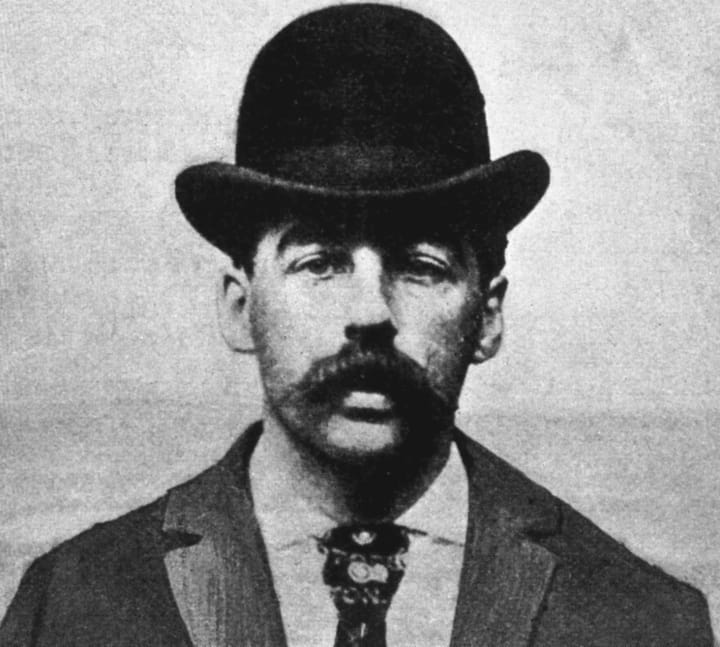
H. H. Holmes left behind several prior lives when he initially arrived in Chicago in 1886. Born Herman Webster Mudgett, he had excellent reason to alter his name due to earlier problems.
Similar to his time in college, when he worked in the anatomy department and dismembered corpses in order to swindle life insurance companies. Or when he was last observed in New York with a little child who had gone missing. Or when he practiced pharmacy in Philadelphia and a client passed away after ingesting his medications.
After all of these occurrences, Mudgett just left town and later adopted the name Henry Howard Holmes. Holmes obtained an employment in a drugstore on 63rd Street not long after arriving in the Windy City. He did it by utilizing his expertise in medicine and his endearing demeanor.
Holmes was stylish, intelligent, and likeable. In fact, he was so endearing that he married three unaware ladies simultaneously at one time in his life.
He purchased a vacant land across the street from the business where he worked in 1887 and started building a three-story structure that he said would house flats and stores.
The building was unattractive and huge, covering a whole block and had more than 100 rooms. Yet, Chicago was a growing metropolis, and this region of the American Midwest was being covered with new buildings.
After all, Chicago's location on the Lake Michigan shoreline made it the ideal center for the vast railroad networks that crisscrossed the country and all emanated from the city like spokes in a wheel.
The locals had no idea that exactly at that location, a house of horrors was about to appear.
The “Murder Castle” Of Chicago
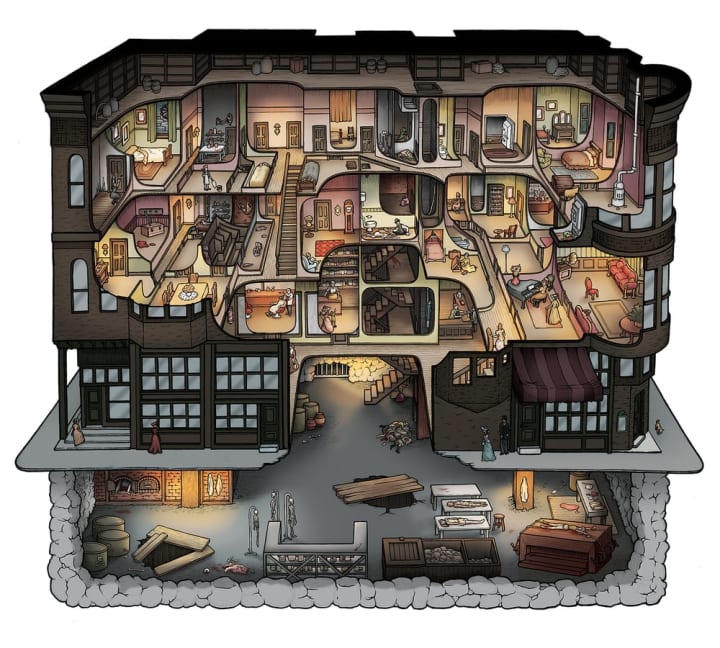
H. H. Holmes intended his mansion's first floor to be a full block of stores that he could rent to the influx of new enterprises that were springing up in the city.
Apartments would be located on the third level for newcomers hoping to succeed in the Windy City. Unsettlingly, it's possible that some of those gullible locals ended up being Holmes's victims.
The victims were given access to the second level, which was said to be full of "asphyxiation rooms," mazes, and secret stairs. The most unfortunate victims also managed to descend to the basement, which concealed the complex horrors for which the H. H. Holmes mansion is now renowned.
Apparently switching builders and architects regularly throughout the building's development prevented anybody from understanding the terrible purpose behind all the peculiar components.
The building was finished in 1892. Even while Holmes was being held in custody in 1894, officers would be navigating its intricate corridors. The findings first baffled the authorities.
There were movable dividers and hinged walls. Some rooms featured five doors, while others had none. Below the flooring, there were hidden, airless cells, and the walls, which were encased with iron plates, seemed to muffle all sound.
At Holmes' own apartment, a trapdoor in the bathroom opened to expose a flight of stairs leading to a roomless cell. There was apparently a sizable funnel in the cubicle that ran down into the basement. (Warning: It wasn't employed for filthy laundry.)
A famous room has gas fittings all around it. Here, Holmes reportedly would lock his victims inside, turn on a light in a nearby room, and wait for the tragedy to happen. Nearby, another chute was discovered.
A complex alarm system was interconnected with all of the doors and part of the staircases. In Holmes' bedroom, a bell sounded each time someone entered the hallway or went downstairs.
As a result, it's important to keep in mind that at least some of the designs may have been exaggerated or even fabricated by the newspapers of the time. It should be emphasized that these descriptions have been regarded with considerable suspicion by historians, particularly in recent years.
Uncovering The Murder Hotel
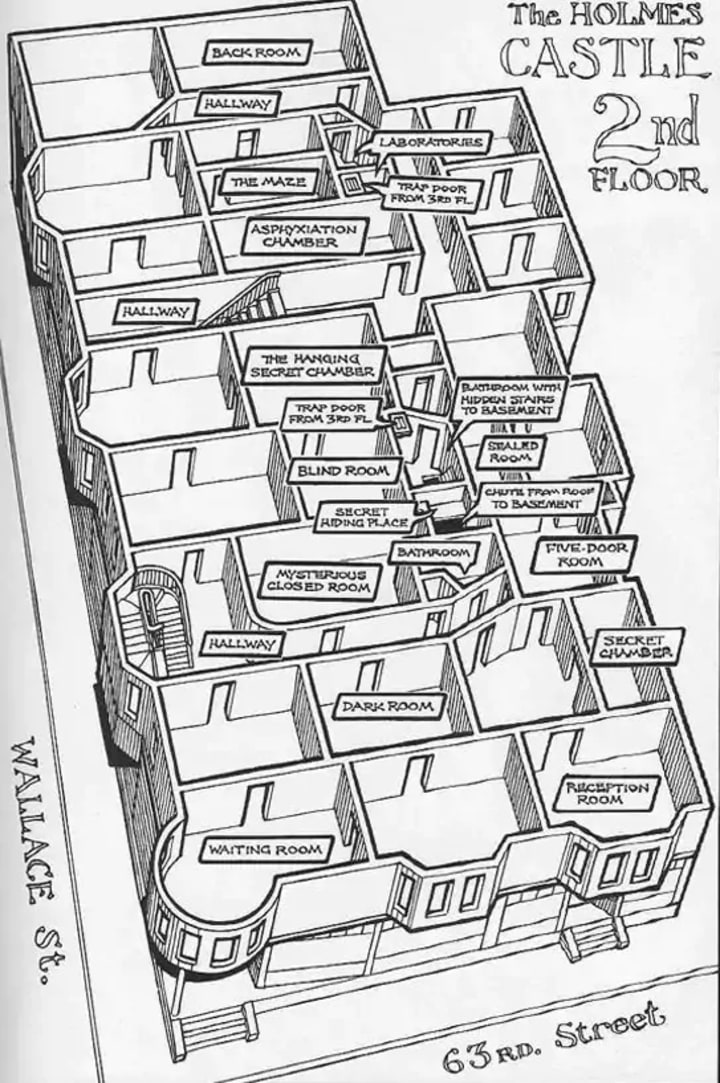
The police found their first hint about the underlying intent behind the unusual floor design inside a heap of bones.
Although some of the bones were human, the majority of them were from animals. They belonged to a youngster, perhaps no more than six or seven years old, because they were so little.
The extent of the hidden horrors in the building was ultimately made clear when investigators entered the cellar.
They discovered a woman's clothing next to an operation table covered in blood. There were a crematory, a number of medical tools, a strange torture gadget, and shelves of dissolving acids in addition to another surgical surface.
Both Holmes' obsession with dead people and his surgical prowess seems to have persisted long after he graduated from college.
He reportedly dropped his victims via the chutes, washed and dissected them, then sold the organs or skeletons to hospitals or on the black market.
How A Flood Of Temporary Workers Gave New Boarders
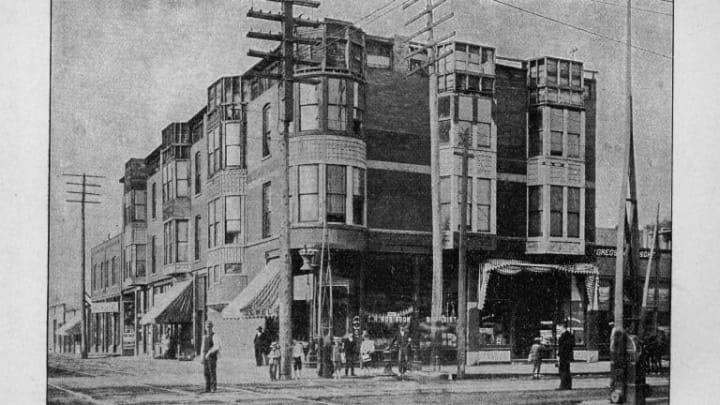
It's improbable that any of the victims were drawn into the mansion's depths, despite the fact that it didn't appear at all appealing. They came in on their own will, perhaps charmed by the owner's flattery and display of wealth.
They could have even been his workers in certain instances. More than 150 women were employed by Holmes as stenographers throughout the course of his two brief years at the castle. Several of them were also said to be his mistresses.
Sometimes, Holmes took pictures of his favorites. They were trusting of this man in the huge, strange city since they were young, gorgeous, and attractive.
Chicago, a growing metropolis with excellent transportation options thanks to its railway hub, definitely had a new influx of visitors entering and leaving Holmes's estate.
But despite the prominent ladies who vanished while working for him, it wasn't murderous allegations that brought to Holmes's downfall.
In a big city, people come and go all the time, frequently without warning. Furthermore, it was particularly challenging to find them in the days before modern technology. So, it was always possible to explain away the absence of the young ladies employed by Holmes as just moving on or returning home.
Finally, Holmes was apprehended in Boston on November 17, 1894, for embezzlement and ill-conceived financial scams.
H. H. Holmes was imprisoned after decades of illegal behavior (the scope and intricacy of which you actually need a book to properly understand).
When he was in jail, ties between him and at least one murder were discovered; nevertheless, the more serious claims that surfaced overshadowed a mountain of financial charges. Once everything was said and done, Holmes was formally connected to a total of 9 killings.
While he boasted of having committed at least 27 killings, he made three distinct confessions when he was incarcerated, all of which had contradictory counts.
Because the house was designed for Holmes to destroy remaining body parts in acid baths or burn them in a human-sized burner, the actual number of victims was impossible to confirm. Investigators discovered a little gold chain from a woman's shoe among the ashes in one pile.
The Devil In The White City
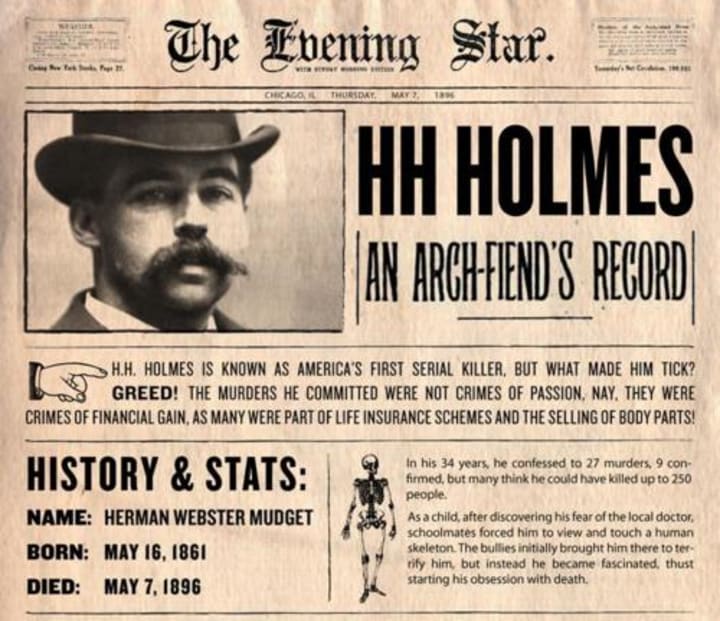
In a subsequent interview, Holmes claimed, "I was born with the devil in me. Just as a poet cannot control the inspiration to sing, I could not stop the fact that I was a killer."
H. H. Holmes started his murderous rampage during a time in history when an unprecedented number of unidentified, unaccompanied strangers flooded the streets of Chicago in search of temporary accommodation, as described in Erik Larson's book The Devil In The White City.
One of the most well-attended cultural events of the time was the 1893 Chicago World's Fair, which drew millions of visitors.
In light of the tens of thousands of persons that went missing during the World's Fair, some publications speculated that Holmes's true victim count may have been in the hundreds.
The most of the time, Holmes spoke for himself throughout his trial, demonstrating his trademark elegance and a "wonderful acquaintance with the law," according one newspaper of the day.
His charm, however, wasn't enough to win over the jury, and he was unanimously given the death penalty by hanging.
Holmes requested if his body may be sealed in cement within his coffin since he was quite familiar with what could be done to a person's corpse after death.
H. H. Holmes claimed he was evolving into the devil just before his passing in 1896. He claimed that even his appearance was beginning to seem demonic.
His execution was a painful experience. His neck didn't crack when the floor was dumped beneath him as it should have. Around 20 minutes passed while he was twitching before he was declared dead.
Unusual Deaths Found in the Years After The H. H. Holmes Hotel
Those associated with the H. H. Holmes hotel case afterwards had odd outcomes.
A Chicago police officer shot the individual who had first alerted the authorities to H. H. Holmes's criminal activities. The jail warden who had been keeping Holmes locked up committed suicide. The district attorney's office, where the illustrious case was brought, caught fire.
In addition, Patrick Quinlan, the former castle keeper who, after Holmes, knew the most about the eerie structure, committed suicide in 1914.
He only wrote, "I could not sleep," in his message.
Nowadays, the murder castle is no longer standing. A fire that destroyed the house in 1895 may have been set by two individuals who were spotted entering the structure late at night. In 1938, the remaining building was demolished. A modest post office now occupies the H. H. Holmes residence.
About the Creator
Victoria Velkova
With a passion for words and a love of storytelling.


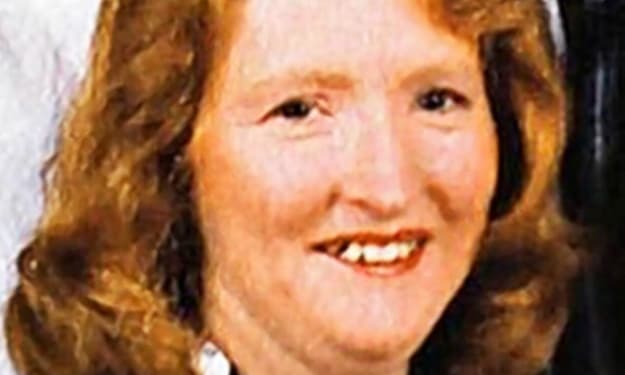



Comments
There are no comments for this story
Be the first to respond and start the conversation.